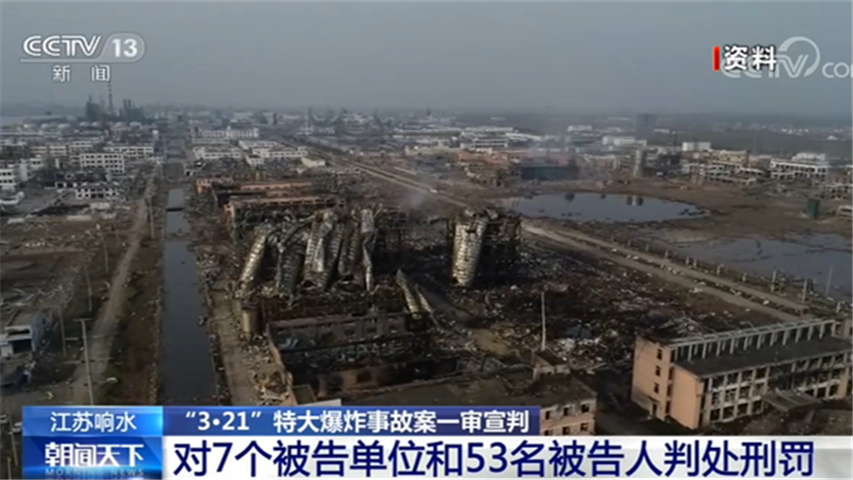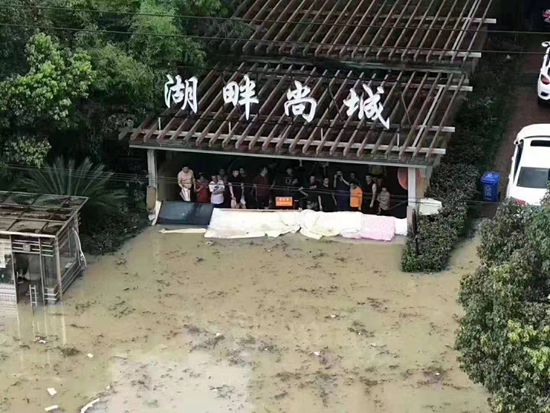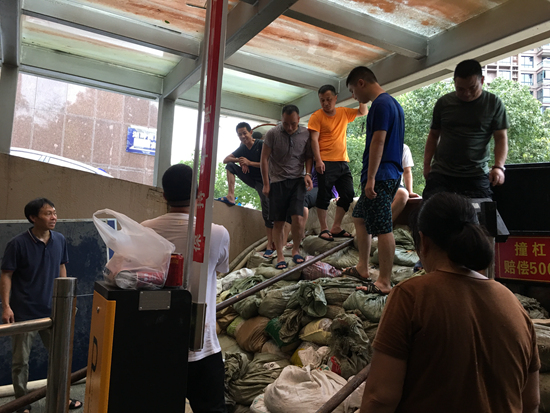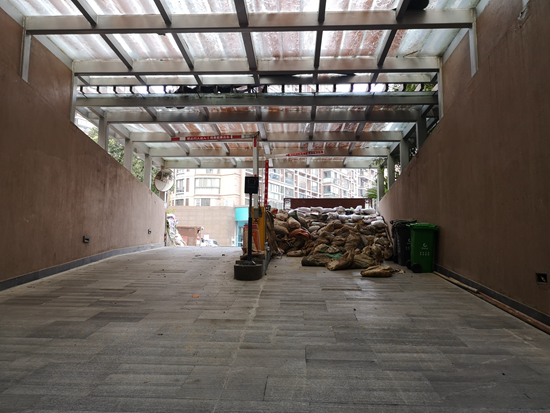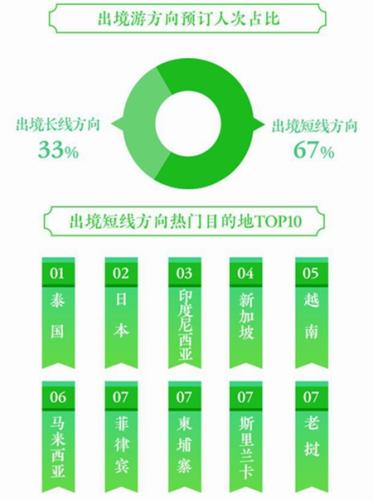According to the "Xuzhou Released" WeChat WeChat official account News, according to the national and provincial requirements for the prevention and control of the COVID-19 epidemic, the expert group has judged and evaluated, and since April 8, 2022, the epidemic control measures in some areas of Xuzhou have been adjusted. Combined with the control areas in the previous notice, the comprehensive situation is as follows:
First, the closed control area is:
1. Group 2 of Youfang Village, Tiefu Town, Pizhou City;
2. Group 6 of Goushang Village, Tiefu Town, Pizhou City;
3. Group 2 of Zhuanglou Village, Wangji Town, Suining County;
4. Building 4, Phase I of Jinghu Community, Suining County;
5. Building 18, Daniel lee Community, Suining County;
6. Mucheng Hot Pot Restaurant and its neighboring shops in tongshan district Tianfu Commercial Street;
7. tongshan district Zhongjun Jinshuiwan Lanzhou Ramen Restaurant and its neighboring shops;
8. Building 8 of Jiangshan Royal Community in tongshan district;
9. tongshan district All Seasons Hotel (Daxue Road Store);
10. tongshan district Expressway Liuji Service Area West Supermarket;
11. South Area of Pengcheng Service Area of tongshan district Expressway;
12. tongshan district Dacheng Logistics Park C1-3;
13. C15-5 tongshan district Dacheng Logistics Park;
14. Cuiyuan Department Store in Dapeng Town, Tongshan District;
15. Team 2 of Wangmen Village, Dapeng Town, Tongshan District;
16. Maple Leaf Hotel, Dapeng Town, Tongshan District;
17. Huainan beef soup shop opposite Maple Leaf Hotel in Dapeng Town, Tongshan District;
18. Heyao Agricultural Distribution Department and its neighboring shops in Dapeng Town, Tongshan District;
19. The clinic of Wangmen Village, Dapeng Town, Tongshan District and its neighboring residents;
20. tongshan district shanji Little guo zhuang cun Team 8;
21. tongshan district shanji Chunhui Hall Pharmacy and its neighboring shops;
22. Team 4, Honglou Village, shanji City, tongshan district;
23. Shops in tongshan district shanji Commercial Street;
24. Team 6 of Xinhe Village, shanji City, tongshan district;
25. Clinic of Xinhe Village, shanji City, tongshan district and its neighboring households;
26, tongshan district shanji Honglou Village clinic and neighboring households;
27. tongshan district Laojiahe Toll Station Courtyard of National Highway 311;
28. Tengwang Gas Station in Fengwang Village, Liuji Town, tongshan district;
29. Lanzhou Ramen Restaurant and its neighboring shops in Heping No.1, Yunlong District;
30. Building 28, Phase III of Heping No.1, Yunlong District;
31. Yuanqiao 2012 Billiards Room and its adjacent shops in Yunlong District;
32. Jibai Clinic in Yunlong District;
33. Shengjia Kitchen Shop and its adjacent shops opposite the south gate of Liangmao Market in Yunlong District;
34. Shunda Vehicle Industry and its adjacent shops about 80 meters southwest of Liangmao Market in Yunlong District;
35. Audi Floor Shop and its adjacent shops in Xuanwu Market, Yunlong District;
36. Building 1, South Market, Xuanwu Market, Yunlong District;
37. Caijia Grocery Store and its adjacent shops at the west gate of Xin Chaoyang Market in Yunlong District;
38. Building 1, Yulanyuan Community, Xingfu Road, Yunlong District;
39. China Resources suguo supermarket (Vanke Xinhuai Center Store) in Yunlong District;
40. Yifeng Pharmacy and its adjacent shops in Shimao Plaza, Yunlong District;
41. Hilton Huanpeng Hotel, Yunlong District (No.246 Jiefang Road);
42. Zhangsi Grain and Oil Store and its neighboring shops in Shi Lei Lane, Yunlong District;
43. Create Deli Shop and its adjacent shops in Fengchu Street, Yunlong District;
44, Yunlong District Times Square "summer sleeping mat lounge chair summary" shop and its adjacent shops;
45. Manyi Jiaxian Lifestyle Supermarket and its adjacent shops, No.35-21 Hanjing Avenue, Yunlong District;
46. Yueke Convenience Store and its adjacent shops at No.200-5 Minzhu South Road, Yunlong District;
47. Beiping Spicy Soup Shop and its neighboring shops in Xinsheng Street, Yunlong District;
48. Good neighbor grain and oil stores and neighboring shops in Shi Lei Lane, Yunlong District;
49. Ramen restaurant and adjacent shops in Yikang Community, Gulou District;
50. The whole building of Dijia Hotel, Dalu Road, Gulou District;
51. Rookie Station, Block C, Hexin Square Phase III, Gulou District;
52. Yijia Hotel in Hexin Square, Gulou District;
53. Lanzhou Ramen Restaurant, Leke Station Convenience Store and adjacent shops in Hexin Square, Gulou District;
54. Bali Primary School in Gulou District;
55. Block D, Democratic Community, Gulou District;
56. Building 5, A5 District, Jiuli Vanke City, Gulou District;
57. Building 13, Fengcai Community, Gulou District;
58. Houde Supermarket (pro-neighboring convenience store) opposite the south gate of Fengcai Community in Gulou District;
59. Carrefour Hexin Plaza Store in Gulou District;
60, Gulou District Pipa Street flea market and adjacent shops;
61. The Pipa Neighborhood Center in Gulou District purchases Deduo Fresh Market and its neighboring shops;
62. Yinghui Hardware & Building Materials Store and its adjacent shops in Gulou District;
63. Lanzhou Ramen Restaurant and its adjacent shops, No.57 Meigang Road, Gulou District;
64. Qin Laosan Mutton Soup Hall and its adjacent shops in Meigang Road, Gulou District;
65. Lianglaifeng Breakfast Convenience Store and its adjacent shops in Meigang Road, Gulou District;
66. Fuxing tobacco and liquor store and adjacent shops next door to the east gate of Wangchang vegetable market in Gulou District;
67, Gulou District Tongqu Breakfast Store (No.22, Meigang Road) and its adjacent shops;
68. Building 25, Zhu Zhuang Community, Gulou District;
69. Building 26, Zhu Zhuang Community, Gulou District;
70. Jingnan Community in Gulou District includes shops along the street;
71. West Gate supermarket and its adjacent shops in Jingnan Community, Gulou District;
72. China Mobile Jinxiu Shanshui Business Hall and its adjacent shops in Gulou District;
73. Lamian Noodles Restaurant of Lanzhou Beef with Splendid Landscape in Gulou District and its adjacent shops;
74. Xilinmen Supermarket (intersection of Shanshui Road and Huameiyi Lane) and its adjacent shops in Jinxiu Shanshui Community, Gulou District;
75. Jinxiu Shanshui Community in Gulou District;
76. Lanzhou Ramen Restaurant and its neighboring shops in Junsheng Square, Gulou District;
77. Lanzhou Ramen Restaurant and its neighboring shops in Huangting Palm Bay Community, Gulou District;
78. Longkeduo Fresh Supermarket and its adjacent shops in Gulou District;
79. Wangchang Primary School in Gulou District;
80, Gulou District, Subei farmers’ market, small profits and thin hotel supplies and adjacent shops;
81. Gupeng Sesame Oil (Shop No.03, Dongmen) and its neighboring shops in Subei Farmers’ Market in Gulou District;
82. Livable Jiayuan Kindergarten in Gulou District;
83. Building 10, Huamei Dongguanyuan Community, Gulou District;
84. Suke Convenience Store and its adjacent shops in Huancheng Road, Gulou District;
85. Bought Deduo supermarket chain (store number: 1-110) and its adjacent shops in Xiangyun Commercial Plaza, Gulou District;
86. Baotai Real Estate and adjacent shops in Honghui Building, Gulou District;
87, Gulou District Chenguang Shopping Mall beef soup restaurant and adjacent shops;
88. Man Ri Ke Song Bakery (No.64 Huancheng Road) and its adjacent shops in Gulou District;
89. Yafei Bazi Restaurant and its adjacent shops on Huancheng Road in Gulou District;
90. October Mommy and Baby Store and its adjacent shops in Xianghe Road, Gulou District;
91. Buildings 6 and 8 of Donghua Community in Gulou District;
92. Building 18, East Bank Community of Yellow River, Gulou District;
93. Building 6, No.9 Courtyard of Donghua Street, Gulou District;
94. Jinxiu Mingdu in Gulou District;
95. C4 Warehouse of Subei Vintage Park, Haiou Road, Gulou District;
96. Building 10, Huakangyuan Community, Gulou District;
97. The envelope workshop in the yard of the life management section in the east gate of the 29 th dormitory of Gulou District Railway;
98, Gulou District Dongchu inventory commodity trading market;
99. Yifeng Pharmacy at the West Gate of Gulou Garden in Gulou District and its adjacent shops;
100. Weiji Peixian Dog Meat Restaurant and its adjacent shops in Qianjin Road, Gulou District;
101, Gulou District Fuxing North Road Health Care Products Store (30 meters north of Hongxing Gas Station) and adjacent shops;
102. Building 11, Zehui Jiayuan Community, Gulou District;
103. Unknown shops and adjacent shops in the east next door of Maikesi Baking House in Guanyu Road, Gulou District;
104. Tianmuyuan Fruit and Vegetable Supermarket and its adjacent shops in Guanyu Road, Gulou District;
105. Tianyue Huajing Suning Store and its adjacent shops in Gulou District;
106. quanshan district Huxi Yayuan Area B and its surrounding shops;
107. Building 10, Duanzhuang Community, quanshan district;
108. quanshan district Waiyuyao Road Beef Soup Lamian Noodles Store (west of the north gate of Yinhu Community) and its adjacent shops;
109. quanshan district Lakeside Mutton Noodles Mutton Soup Cooking Shop and its neighboring shops;
110. Building 6, Phase II of quanshan district Xingshi Community;
111. Milk Tea Shop of Zhennai Club and its adjacent shops in No.1 Building, Fushun Road, quanshan district;
112. Shop No.45-6, Dry Transfer Zone, 2nd floor, Yurun Market, quanshan district and its adjacent shops;
113. Laosun Flat Shop and its adjacent shops in quanshan district Huanghe New Village;
114. quanshan district Huaihai West Road Gourmet Street Zhaojie Flat Shop and its neighboring shops;
115. The former foundry compound of quanshan district Kuangshan Road;
116. quanshan district Quanjufu Bazi Meat Fast Food Restaurant (No.9 Mine Road) and its neighboring shops;
117. Buildings 24 and 29 of quanshan district Mine South Community and the bungalows downstairs;
118. Building 1, Guanzhuang Community, Second Ring Road West, quanshan district;
119. Fuyangzhai Mutton Soup Restaurant and its adjacent shops, No.16 Shuimanqiao Road, quanshan district;
120. Shunhe Unlocking Shoe Repair Shop and its adjacent shops at No.16 Mingli Street, quanshan district;
121. quanshan district Yihe Yuanjing Construction Site;
122. quanshan district Kuangshan East Road Chuanxiang Cuisine Hotel and its adjacent shops;
123. Taihe flat shop on quanshan district Kuangshan East Road and its adjacent shops;
124. Lifeng Hotel and its adjacent shops, No.2 Kuangshan East Road, quanshan district;
125. quanshan district Zhengzhenwang Steamed Bun Shop (Shop No.1009, West Gate of Vanke Emerald Tianyu) and its neighboring shops;
126. Building 9, North Community of quanshan district Park;
127. quanshan district Tiger Restaurant (Jade Tianyu Store) and its neighboring shops;
128. Xiaoyang Asen Sauce Bone Rice Hotel (Vanke Tianyu Store) on Xinghua Road, quanshan district and its adjacent shops;
129, quanshan district Jinshan East Road Xianxian Xianxian mutton restaurant and its adjacent shops;
130. quanshan district Fengmanfu Supermarket (No.77 Huanghe South Road) and its adjacent shops;
131. Youhe Life Convenience Supermarket and its adjacent shops in Xinghua Road, quanshan district;
132. Hanting Hotel (deji plaza Store), No.1-3 Jianguo West Road, quanshan district;
133. No.18 Jianguo West Road, quanshan district (Xuzhou Central Branch of the People’s Bank of China);
134. Building 14 of Jiayuan Community, Zhangxiaolou, quanshan district;
135. Chongyang Food Store and its neighboring shops in Zhongshu Street, quanshan district;
136. Building 12, Jiangong Community, Textile Road, quanshan district;
137, quanshan district Coal Construction Street Duji Yipin Xiang shop and adjacent shops;
138. Building 7, South Yard, No.169 Community, quanshan district Coal Construction First Street;
139. Yong ‘an Street Primary School in quanshan district;
140. Yilake Clothing Store and its adjacent shops on the first floor of Shangcheng International, quanshan district;
141. Building 15, Xinquan Jiayuan Community, quanshan district;
142. quanshan district Wangling Road Tobacco Liquor (east of Park West Village) and its neighboring shops;
143. Team 3, Jianxi Village, cornus Mountain Street, jiawang district;
144. Unknown canteen opposite the gate of Xuyang Primary School in cornus Mountain Street, jiawang district;
145. Xinji Hualian Supermarket and its adjacent shops in Biantang Town, jiawang district;
146. Mengsheng Village, Biantang Town, jiawang district;
147. Hanyuan Village, Biantang Town, jiawang district;
148. Zhugu Village, Biantang Town, jiawang district;
149, jiawang district Biantang Town Commercial Street shops;
150. jiawang district Jiangzhuang Town Ma ‘an Street Hardware Store and its adjacent shops;
151. Jinhu Shiji Hualian Supermarket and its adjacent shops in Ma ‘an Street, Jiangzhuang Town, jiawang district;
152. Lanzhou Ramen Restaurant, Fresh Orchard Fruit Shop and adjacent shops in Ma ‘an New Village, Jiangzhuang Town, jiawang district;
153. Junyuan Pharmacy and adjacent shops in Jiangzhuang Town, jiawang district;
154. Lanzhou Authentic Beef Ramen Restaurant and its neighboring shops in Qingshanquan Town, jiawang district;
155. No.18 gas station in Xuzhou, China Petrochemical Company, jiawang district (east of National Highway 206);
156. jiawang district Serene Petrochemical Gas Station (intersection of quancheng road and Hongfu Road);
157. Group 6, Guxi Village, Daquan Street, jiawang district;
158. Love Supermarket in Guxi Village of Daquan Street, jiawang district;
159. Good Neighbor Life Supermarket and its adjacent shops in Huadu A District, Quancheng, jiawang district;
160. Lujia Department Store and its adjacent shops in Zone D, Huadu, Quancheng, jiawang district;
161. Building 25, Wolong City Community, jiawang district;
162. Jinshanqiao Street and adjacent shops in Economic and Technological Development Zone;
163. Lanzhou Ramen Restaurant in Times Square of High-speed Railway in Economic and Technological Development Zone and its neighboring shops;
164. 15 buildings in the third phase of Mr. Yu’s community in Huaihai International Port Area;
165, Huaihai International Port Area Tianyu Times City rural big mat dishes (shop number: 15-111) and adjacent shops;
166. Self-built warehouse next door to Jiuli Tobacco Factory, Group 6, Sushan Street, Huaihai International Port Area;
167. Group 9 of Chentang Village, Liuxin Town, Huaihai International Port Area;
168, Huaihai International Port Area Liuxin Town Runxin Road Shuntong Motor-bicycle-fittings and adjacent shops;
169. Peizhi Deli Shop in Kuangshan Road, Liuxin Town, Huaihai International Port Area and its adjacent shops;
170. Building 4, Huajing Community, Huaihai International Port Area.
Second, the control area is:
1. Youfang Village, Tiefu Town, Pizhou City;
2. Goushang Village, Tiefu Town, Pizhou City;
3. Baibu Village, Guanhu Town, Pizhou City;
4. Zhuanglou Village, Wangji Town, Suining County;
5. Jinghu Community in Suining County;
6. Daniel lee Community, Suining County;
7. tongshan district Zhongjun Jinshuiwan Community;
8. Jiangshan Royal Community in tongshan district;
9. tongshan district Expressway Liuji Service Area West Area;
10. Wangmen Village, Dapeng Town, Tongshan District;
11. shanji, tongshan district;
12. The third phase of Heping No.1 in Yunlong District and its surrounding shops;
13. Shops around Jibai Clinic in Yunlong District;
14. Yulanyuan Community, Xingfu Road, Yunlong District;
15. South Market of Xuanwu Market in Yunlong District;
16. Gulou District Democratic Community;
17. A4 and A5 districts of Jiuli Vanke City in Gulou District;
18. Fengcai Community in Gulou District;
19. Zhu Zhuang Community, Gulou District;
20. Xianghe Community in Gulou District;
21. Xianghe Huakangyuan Community in Gulou District;
22. Jinxiu Shanshui Community and surrounding shops in Gulou District;
23. Junsheng Square in Gulou District;
24. Huangting Palm Bay Community in Gulou District;
25. Subei Farmers’ Market in Gulou District;
26. Huamei Dongguanyuan Community in Gulou District;
27. Livable Jiayuan Community in Gulou District;
28. Honghui Building, Gulou District;
29. Block C, Hexin Plaza Phase III, Gulou District;
30. Donghua Community in Gulou District;
31. East Bank Community of the Yellow River in Gulou District;
32. Courtyard No.9 Donghua Street, Gulou District;
33. Subei Vintage Park, Haiou Road, Gulou District
34. Yard of Life Management Section in East Gate of No.29 Dormitory of Gulou District Railway;
35. Zehui Jiayuan Community in Gulou District;
36. Duanzhuang Community in quanshan district;
37. quanshan district Huxi Yayuan Community;
38. quanshan district Xingshi Community Phase II;
39. quanshan district Mine South Community;
40. Guanzhuang Group Community, Second Ring Road West, quanshan district;
41. quanshan district Park North Community;
42. Jiayuan Community in Zhangxiaolou, quanshan district;
43. quanshan district Textile Road Construction Community;
44. South Yard, Community 169, quanshan district Coal Construction First Street;
45. quanshan district Xinquan Jiayuan Community;
46. Yinlong Community and surrounding shops in Jiangzhuang Town, jiawang district;
47. Jianxi Village, cornus Mountain Street, jiawang district;
48. Xuyang Village, cornus Mountain Street, jiawang district;
49. Biantang Town, jiawang district;
50. Guxi Village, Daquan Street, jiawang district;
51. Wolong City Community in jiawang district;
52. Huadu Community in Quancheng, jiawang district;
53. Phase III of Mr. Yu’s Community in Huaihai International Port Area;
54. Chentang Village, Liuxin Town, Huaihai International Port Area;
55. Huajing Community in Huaihai International Port Area.
Three, the prevention area is:
1. Pizhou City (outside the closed control area and control area);
2. Suining County (outside the closed control area and control area);
3. tongshan district (outside the closed control area and the control area);
4. Yunlong District (outside the closed control area and the control area);
5. Gulou District (outside the closed control area and control area);
6. quanshan district (outside the closed control area and the control area);
7. jiawang district (outside the closed control area and the control area);
8. Economic and Technological Development Zones (areas outside the closed control zones and control zones);
9. Huaihai International Port Area (outside the closed control area and control area).
The above measures will be implemented from April 8, 2022, and will be adjusted in time according to the changes in the epidemic prevention and control situation.
This is for your information.








